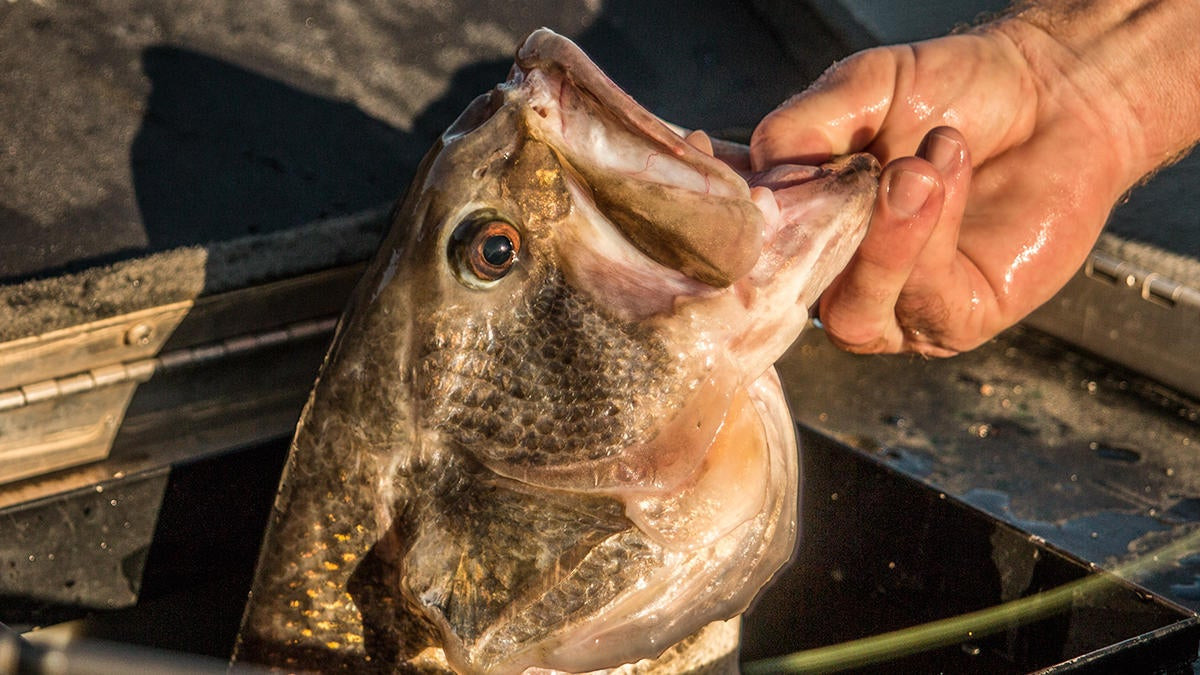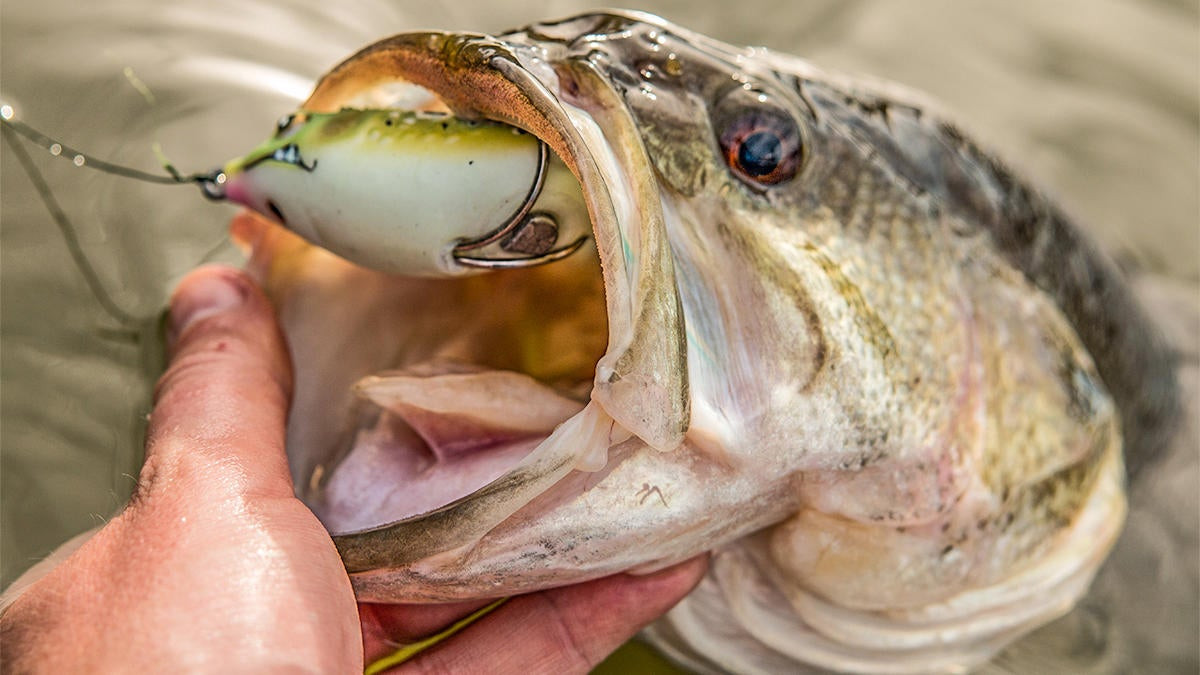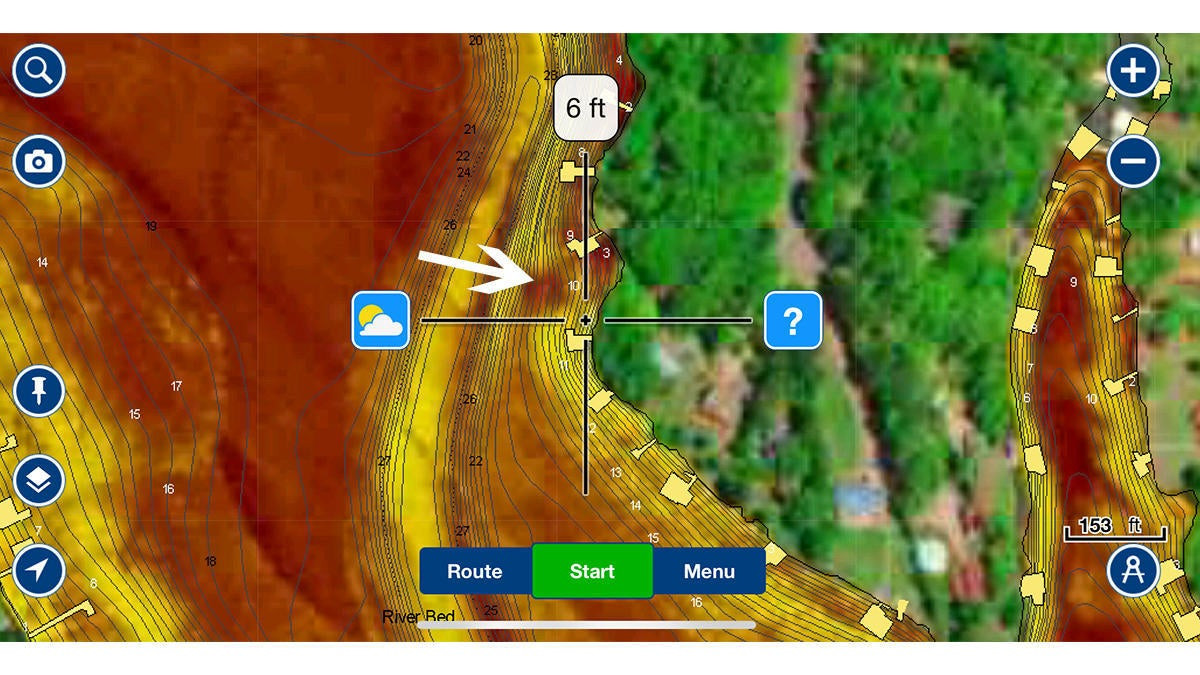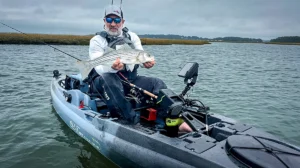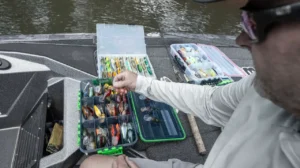I’ve been trying to do a better job this year at listening. My career is centered around talking (or typing) about bass fishing and it can be easy for me to get caught up in that. I’ve made a concerted effort to ask more and deeper questions to both professional anglers and my local fishing buddies and just hear what they have to say. Whether or not I agree, I’m trying to keep a more open mind to hopefully expand my bass fishing horizons.
I was having a conversation with someone last week and it spurred the idea for this article. This person was a little spun out in regards to their recent tournament finishes and as they talked and vented to me, I noticed they were making a lot of really broad generalizations about spring bass fishing.
Many of us have grandfathers and fathers who fed us a lot of great bass fishing information growing up; there’s no doubt about that. But there are some old-school “tips” out there that can lead you astray if you’re not careful. I’ve learned the hard way through the years and I think if you can keep these wives’ tales or myths out of your brain this spring, you’ll catch more and bigger bass.
Myth No. 1: You need overcast skies for a good topwater bite
Truth be told, I’m mad at myself for believing this myth for upwards of 20 years. That’s two decades of my life that I have been missing out on some of the best topwater fishing imaginable. Maybe it’s just me but as I was growing up, I was taught that lowlight conditions were absolutely necessary for a good springtime topwater bite. If it wasn’t cloudy or within an hour of the sun rising or setting, I wouldn’t even consider it.
I couldn’t have been more wrong.
I was pitching and flipping a grass bed about five years ago. It was around early April and my wife was in the boat with me. I couldn’t get bit and felt like a total moron, to be honest. I figured anyone should be able to catch bass when they’re littered all over the bank that time of year. Right after I made a pitch with a Texas-rigged lizard, a staple for spring bass fishing, I noticed a fish just barely break the surface on the inside grass line. Heck, it could have been a bluegill for all I know, but my gut told me it was a bass.
Out of options and clearly frustrated, I figured I’d rig up a soft-plastic toad since I didn’t really have anything to lose. It was hotter than blue blazes and I bet there wasn’t a single cloud within 100 miles of my wife and me. With braided line in my mouth as I finished my Palomar knot, I told her, “I’m a dang fool. This ain’t gonna work.”
Again, I couldn’t have been more wrong.
My first cast caught the fish I saw busting. She wasn’t a biggun and heck, it actually could have been a chunky buck bass. But I remember swinging that bass in the boat and looking at my wife with a huge grin on my face. I told her, “Honey… they’re in trouble if they get to eating this toad today.”
To make a long story short, I caught the mess out of ’em that afternoon. In just a few hours, my best-five bass went 26 pounds according to my Rapala scale. That day changed my entire view of topwater bass fishing in the spring. Since then, almost all of my best topwater days have happened on sunny spring days. Why couldn’t I have picked up on that 20 years ago?
I personally believe that the sunny weather positions these bass into more predictable areas. In lowlight conditions, bass tend to roam a lot more when searching for forage. Sure, they might bite better when it’s cloudy, but I don’t enjoy randomly casting down large stretches of bank. I like to cast where a bass should be, if that makes sense. In my mind, it just makes more since to fish in that manner. So while the bite may be a little slower on a sunny, spring day, I can guess where a bass might be sitting. Grass points, grass irregularities, dark spots and small current breaks tend to position these springtime bass and make them easier to pinpoint.
These bass aren’t always going to be biting because they’re hungry. They could be sitting on a bed or scouting out a new location for a bed. So if you make a cast to a good-looking spot and don’t get a bite, I’d strongly suggest making three or four more subsequent casts to the same spot in an attempt to elicit an aggressive reaction strike.
Myth No. 2: You have to get in the skinny water
Most of us understand what bass do in the spring; they move towards shallow water in preparation for their annual spawn. Many of us have had it pounded into our heads that we have to find the skinniest and most unmolested backwaters to find these bass. That’s how it was for me growing up. Heck, I got in trouble on a field trip in fifth grade when I wandered away from my class because I saw a backwater slough and went to look for bedding bass. I sincerely thought that was the only place to find spawners.
As I got older and much more experienced in my pursuit of bass, I actually started steering away from these areas more regularly. I believe a lot of bass prefer to spawn in shallow water that’s adjacent to some sort of deep water. Those backwater sloughs certainly play host to springtime bass but I believe that population is very finite. Many of those bass are resident fish which means that the area won’t always repopulate with fresh fish. I think a lot of those bass live back there for their entire lives and rarely, if ever, leave.
The moment that solidified this theory for me was when I caught my personal-best bass that weighed 13.14 pounds. She had an entire shallow, sandy backwater to spawn on if she wanted. It was south-facing and just a perfect setup for a big female. But she didn’t choose that area. Instead, she chose the base of a laydown that was in about four feet of water with 15 feet of water just a few yards away. And before you send an angry email, I didn’t sight fish for her and had no idea she was on bed until after the catch… and yes, she was released alive.
I really think these big females are smart and somehow understand that spring is a volatile time of year in terms of the weather. They choose these shallow-water areas with deep water adjacent in order to be able to quickly adjust to quickly changing conditions. If a cold front comes through, they can kick their tail three times and slide off the break line into 15 feet of water. Conversely, if a warming trend occurs, they can slide up and lay their eggs quickly.
So can those sexy-looking backwaters hold some big bass in the spring? You’re dang right they can. But I think those fish are much easier to spook and much less likely to replenish throughout the spring.
Myth No. 3: Sight fishing is the only way to go
I can’t stand sight fishing during the spring, so maybe I’m a little biased on this one. But man, so many folks are convinced that it’s the only way you can catch big bass in the spring. If you were to watch a tournament blast-off here on my home lake this time of year, I’d bet you a mortgage payment that 90 percent of anglers will immediately head to the south end of the lake searching for clear water. There’s a BFL this weekend and I bet there are a lot of guys who have spent three straight days looking for beds. To each their own and heck, maybe that’s how the derby will be won. But I think it’s important that we all understand there are other ways to catch bass this time of year. Don’t be afraid of the dirty water.
I love dirty water this time of year; I actively look for it. I think the shallow spring “push” happens a lot earlier in this dirty water because the water is denser, which results in better heat conduction. Just a degree or two of difference in water temperature can make all the difference in the world this time of year, so while they may not be active or moved shallow in the south end of the lake, it could be absolutely gangbusters just five miles north up one of the rivers.
If you’re patient enough to sit on a single fish for an hour at a time… then by all means, go sight fishing. But this ol’ boy ain’t about that life. I’m a very impatient guy, so I like to hit up the muddy water and move a little faster.
Something else that got me thinking about this myth is all the big fish that get caught around here in the spring. I know most of the folks with the near-record catches and nearly every single one of them comes from dirty water on a white spinnerbait. Very rarely do you hear about someone sight-fishing a double-digit bass of the bed around here. Maybe it’s the insane tournament pressure on my home lake but it just seems like the big bags consistently come from the dirtier water around here.
I don’t have all the answers, guys; I probably don’t even have half of ’em. But through my conversations with buddies the last few weeks, it was obvious to me that there are some major misconceptions floating around out there regarding spring bass fishing. Everybody does things a different way and that’s what’s cool about bass fishing. But I urge you to keep these three things in the back of your mind for the next month or two. I honestly think it’ll help you have a little more success.


